Leo XIV: The first pope from the United States, a figure in the spirit of Francis
Robert Francis Prevost, 69, an Augustinian and former bishop in Peru, represents the triumph of continuity — but with the added assurance of strong governance and doctrinal solidity

Leo XIV, Robert Francis Prevost, 69, became the first pope from the United States on Thursday. The Church has placed Prevost — a conciliatory, soft-spoken Augustinian with a humble demeanor — at the forefront in the face of growing polarization fueled by Donald Trump and the rise of populist politics in the United States and around the world.
His first words were a call for peace, delivered to a crowd unsure of who stood before them, as he remains largely unknown: “Peace be with you all.” His election marks a continuation of Pope Francis’s legacy.
Prevost, who also holds Peruvian citizenship, was the quiet favorite of the Church’s more progressive wing, yet garnered widespread support thanks to his pragmatic, centrist profile. He offers conservatives the reassurance of solid governance and doctrinal stability. A calm and steady figure, Pope Leo XIV faces the task of easing the tensions that deeply divided the Church leading up to the conclave.
Having spent decades in Peru as a bishop, Prevost bridges the global North and South — a middle path following Francis, who was Argentine — while remaining within the American continent. His father was of Italian descent, his mother of Spanish heritage, and Iberian cuisine was a staple in their home. In his first address, he spoke a few words in Spanish and paid tribute to his former diocese in Chiclayo, Peru.
Prevost’s mixed heritage made him the safest yet most original choice among Western candidates, given many cardinals’ reluctance to take bold risks by selecting names from Asia or Africa. This was despite the fact that the conclave was the most international in history, with representation from 71 countries — and with the global South now forming a majority.
His choice of papal name, meanwhile, evokes Leo XIII, who served from 1878 to 1903 and opened the Church to dialogue with modernity, as well as to social and labor issues. Doctrinally, Prevost has been a loyal collaborator and supporter of Francis’s reforms and efforts toward openness, although he has expressed opposition to the ordination of women — much like Pope Francis himself.
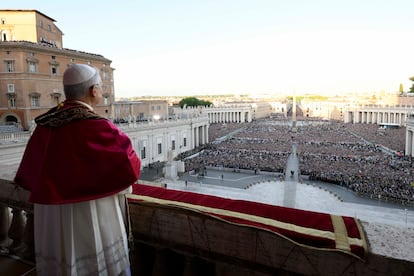
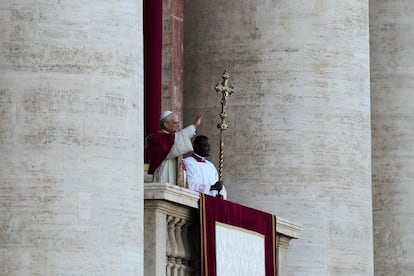
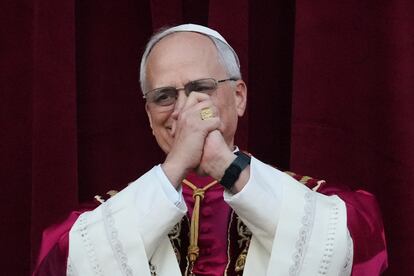
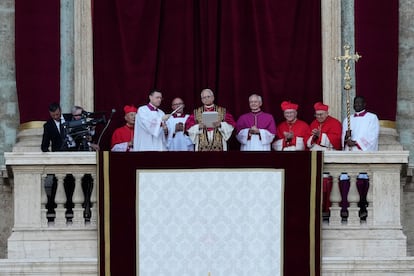
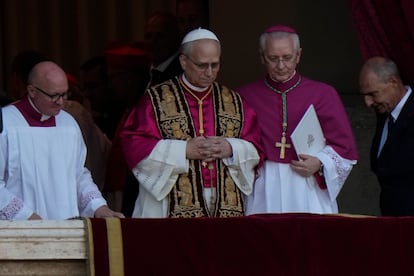

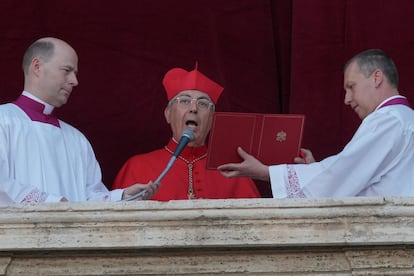
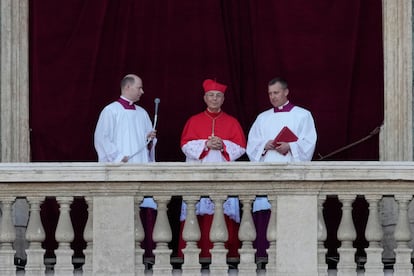

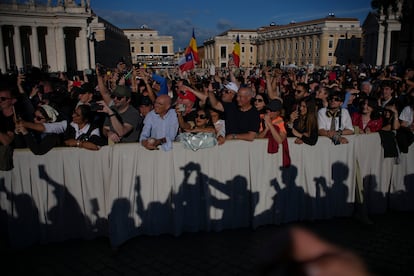
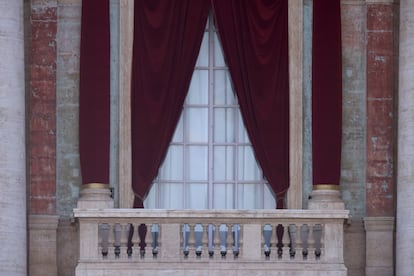

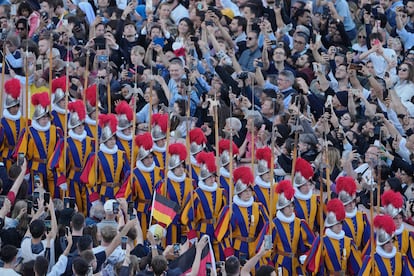
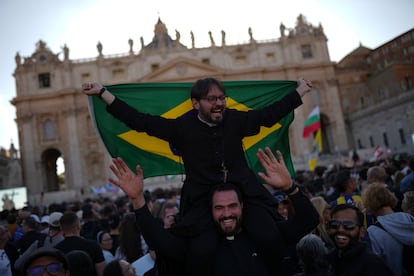


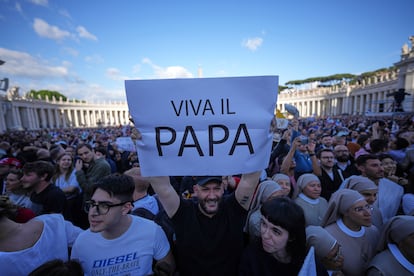

During the synod, Prevost demonstrated strong mediation skills in the Vatican’s delicate standoff with the German Church — the most progressive in the Catholic world — which was pushing for more ambitious reforms. Within the deeply polarized U.S. Church, especially during the Trump era, he is seen as someone capable of bridging both sides.
In his first remarks as pope, Leo XIV presented a markedly different style from his predecessor. He avoided improvisation, read from a prepared text, and adopted a tone less conversational and more catechetical, with a more classical rhetorical style. To start with, he wore traditional papal vestments, more in the style of Benedict XVI than Francis — a gesture likely to please conservative factions. One of his first major decisions will be whether to return to residing in the Apostolic Palace, a symbolic move that may hint at the direction his papacy will take. So far, his image is that of a more conventional pope, one who avoids theatrics and embraces a steady, traditional presence.
The new Pope appeared deeply moved, almost overwhelmed by the moment, his emotions tightly held back as he faced the crowd. His opening words clearly echoed those of John XXIII in his famous “moonlight speech”: “I would like this greeting of peace to enter your hearts, to reach your families and all people, wherever they are, and all the peoples, and all the earth.” Above all, he sought to deliver a message of hope to everyone, without distinction: “God loves us, all of us, evil will not prevail.”
His speech resonated with the spirit of the Second Vatican Council, even though he was only three years old when it was convened in 1958. In the tradition of Pope Francis, it reflected a vision of a more missionary Church, one closer to the poor: “We want to be a synodal church, walking and always seeking peace, charity, closeness, especially to those who are suffering” — a phrase that could easily have come from the Argentine pope himself.
“Humanity needs Him like a bridge to reach God and His love. You help us to build bridges with dialogue and encounter so we can all be one people always in peace,” he concluded.
Though the Augustinian order is not typically known for progressive leanings, Prevost appears to be something of an outlier — a figure capable of striking a balance between conservatives and reformers. He was ordained by Belgian bishop Jean Jadot, a leading voice of the progressive wing of the Roman Curia, and during his time in Peru, he maintained a good relationship with Gustavo Gutiérrez, the father of Liberation Theology.
A swift conclave for a young pontiff
Keeping a very low profile in recent days, Prevost has politely declined all interview requests — including from this newspaper. Yet the speed of his election suggests significant behind-the-scenes efforts to consolidate support. He was chosen after just four ballots, the same number it took to elect Benedict XVI in 2005. A full account of the events will emerge in time, but it’s likely that by the second vote it had become clear that the leading candidate, Pietro Parolin, was unable to gain further traction.
With degrees in mathematics and philosophy, Prevost brings both intellectual rigor and cultural sensitivity to the papacy. A passionate tennis player — though he has gradually stepped back from the sport due to his responsibilities — he was once known for having a formidable backhand. At 69, he is considered a relatively young pope, suggesting the possibility of a long pontificate. His election breaks a long-standing unwritten rule: that the papacy should not be held by someone from a global superpower. This tradition, long upheld through centuries of Italian popes, has now been set aside. Still, Leo XIV is arguably the least “American” among American cardinals — a fact that worked in his favor.
Born in Chicago to parents of Spanish and Italian descent, Prevost was sent to Peru in 1985 at the age of 30. He spent most of his pastoral life there and even served as second vice president of the Peruvian Episcopal Conference. In 2015, Pope Francis appointed him Bishop of Chiclayo, a poor diocese marked by serious social challenges — and a firsthand vantage point on the roots of migration toward the United States. In many ways, Leo XIV embodies a bridge between the wealthy North and the impoverished South.

In the Diocese of Chiclayo, Prevost faced accusations of alleged inaction in cases of abuse. However, the Dicastery for the Doctrine of the Faith conducted a thorough investigation and ultimately dismissed the complaints. In recent days, as his candidacy gained visibility, these accusations resurfaced in some media outlets — even in the form of a dossier — but they did not present a significant obstacle to his election. The matter was already known in Vatican circles, where it is largely seen as a smear campaign. Still, it is likely that the issue will re-emerge in the coming hours.
What’s more, Prevost actively supported victims of the Sodalitium Christianae Vitae scandal — a powerful ultraconservative Peruvian group that was finally dissolved by Pope Francis this year. Prevost helped the journalists who uncovered the case meet with Francis to provide him with their findings in person.
Leo XIV was made a cardinal in 2023. Francis had already signaled him out by appointing him to a high-profile position in Rome: Prefect of the powerful Dicastery for Bishops. This key role oversees the appointment of diocesan leaders across the world, and under Prevost’s leadership, hundreds of new bishops aligned with Francis’s pastoral vision — “shepherds who smell of their sheep” — were appointed. Having had a hand in many episcopal nominations over the past two and a half years, he became a well-known figure in numerous countries, giving him a strategic edge in the conclave.
Francis first came to know Prevost through Peruvian Jesuit Cardinal Ricardo Barreto, and later met him again during his 2018 visit to Peru.
Prevost was also elected Prior General of the Augustinian order in 2001, a position he held until 2013. These various roles gave him valuable governance experience and familiarity with the inner workings of the Roman Curia — qualities many electors considered essential. There was little appetite for another pope unfamiliar with the Vatican and its complex dynamics. After years of internal tensions, no one wanted to see another rift between the Curia and the pontiff. Now, both supporters and critics of Francis are hopeful that they have chosen someone capable of turning the page and moving beyond confrontation.
Sign up for our weekly newsletter to get more English-language news coverage from EL PAÍS USA Edition
Tu suscripción se está usando en otro dispositivo
¿Quieres añadir otro usuario a tu suscripción?
Si continúas leyendo en este dispositivo, no se podrá leer en el otro.
FlechaTu suscripción se está usando en otro dispositivo y solo puedes acceder a EL PAÍS desde un dispositivo a la vez.
Si quieres compartir tu cuenta, cambia tu suscripción a la modalidad Premium, así podrás añadir otro usuario. Cada uno accederá con su propia cuenta de email, lo que os permitirá personalizar vuestra experiencia en EL PAÍS.
¿Tienes una suscripción de empresa? Accede aquí para contratar más cuentas.
En el caso de no saber quién está usando tu cuenta, te recomendamos cambiar tu contraseña aquí.
Si decides continuar compartiendo tu cuenta, este mensaje se mostrará en tu dispositivo y en el de la otra persona que está usando tu cuenta de forma indefinida, afectando a tu experiencia de lectura. Puedes consultar aquí los términos y condiciones de la suscripción digital.
More information
Archived In
Últimas noticias
Chris Martin, Taylor Swift, Elijah Wood and other famous wedding ‘crashers’
‘How does it feel to be a failure?’: Elizabeth Berkley’s journey from ‘Showgirls’ ridicule to vindication
The story of the Málaga virus: The code that haunted Google’s cybersecurity center director for 30 years
The impact of Ecuador’s mega-prison: A polluted river, cleared forests and military checkpoints
Most viewed
- The low-cost creative revolution: How technology is making art accessible to everyone
- Christian Louboutin: ‘Young people don’t want to be like their parents. And if their parents wear sneakers, they’re going to look for something else’
- All the effects of gentrification in one corner of Mexico’s Colonia Roma
- Liset Menéndez de la Prida, neuroscientist: ‘It’s not normal to constantly seek pleasure; it’s important to be bored, to be calm’
- December Social Security and SSI payments: Dates, double checks and the 2026 COLA increase











































